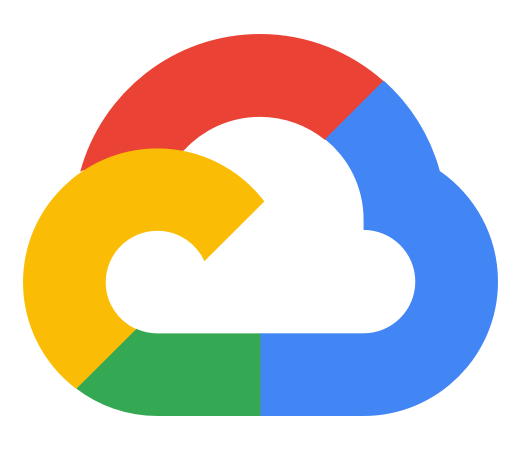Select from 90+ open-source applications
Get any stack you want running in minutes, and never think about upgrades again.


Open Source alternative to Algolia and an Easier-to-Use alternative to ElasticSearch
Available providers






Plural helps you deploy and manage the lifecycle of open-source applications on Kubernetes. Our platform combines the scalability and observability benefits of managed SaaS with the data security, governance, and compliance benefits of self-hosting Typesense.
If you need more than just Typesense, look for other cloud-native and open-source tools in our marketplace of curated applications to leapfrog complex deployments and get started quickly.
plural bundle install typesense typesense-aws
plural bundle install typesense typesense-azure
plural bundle install typesense typesense-gcp
plural build
plural deploy --commit "deploying typesense"
Typesense is a fast, typo-tolerant search engine for building delightful search experiences.
An Open Source Algolia Alternative &
An Easier-to-Use ElasticSearch Alternative
Website | Documentation | Roadmap | Slack Community | Twitter | Office Hours

✨ Here are a couple of live demos that show Typesense in action on large datasets:
🗣️ 🎥 If you prefer watching videos:
Don't see a feature on this list? Search our issue tracker if someone has already requested it and add a comment to it explaining your use-case, or open a new issue if not. We prioritize our roadmap based on user feedback, so we'd love to hear from you.
Here's Typesense's public roadmap: https://github.com/orgs/typesense/projects/1.
The first column also explains how we prioritize features, how you can influence prioritization and our release cadence.
We'd love to benchmark with larger datasets, if we can find large ones in the public domain. If you have any suggestions for structured datasets that are open, please let us know by opening an issue. We'd also be delighted if you're able to share benchmarks from your own large datasets. Please send us a PR!
Typesense is used by a range of users across different industries. We've only recently started documenting who's using it in our Showcase.
If you'd like to be included in the list, please feel free to edit SHOWCASE.md and send us a PR.
You'll also see a list of user logos on the Typesense Cloud home page.
Option 1: You can download the binary packages that we publish for Linux (x86-64) and Mac.
Option 2: You can also run Typesense from our official Docker image.
Option 3: Spin up a managed cluster with Typesense Cloud:
Here's a quick example showcasing how you can create a collection, index a document and search it on Typesense.
Let's begin by starting the Typesense server via Docker:
docker run -p 8108:8108 -v/tmp/data:/data typesense/typesense:0.24.1 --data-dir /data --api-key=Hu52dwsas2AdxdE
We have API Clients in a couple of languages, but let's use the Python client for this example.
Install the Python client for Typesense:
pip install typesense
We can now initialize the client and create a companies collection:
import typesense
client = typesense.Client({
'api_key': 'Hu52dwsas2AdxdE',
'nodes': [{
'host': 'localhost',
'port': '8108',
'protocol': 'http'
}],
'connection_timeout_seconds': 2
})
create_response = client.collections.create({
"name": "companies",
"fields": [
{"name": "company_name", "type": "string" },
{"name": "num_employees", "type": "int32" },
{"name": "country", "type": "string", "facet": True }
],
"default_sorting_field": "num_employees"
})Now, let's add a document to the collection we just created:
document = {
"id": "124",
"company_name": "Stark Industries",
"num_employees": 5215,
"country": "USA"
}
client.collections['companies'].documents.create(document)Finally, let's search for the document we just indexed:
search_parameters = {
'q' : 'stork',
'query_by' : 'company_name',
'filter_by' : 'num_employees:>100',
'sort_by' : 'num_employees:desc'
}
client.collections['companies'].documents.search(search_parameters)Did you notice the typo in the query text? No big deal. Typesense handles typographic errors out-of-the-box!
A step-by-step walk-through is available on our website here.
This will guide you through the process of starting up a Typesense server, indexing data in it and querying the data set.
Here's our official API documentation, available on our website: https://typesense.org/api.
If you notice any issues with the documentation or walk-through, please let us know or send us a PR here: https://github.com/typesense/typesense-website.
While you can definitely use CURL to interact with Typesense Server directly, we offer official API clients to simplify using Typesense from your language of choice. The API Clients come built-in with a smart retry strategy to ensure that API calls made via them are resilient, especially in an HA setup.
If we don't offer an API client in your language, you can still use any popular HTTP client library to access Typesense's APIs directly.
Here are some community-contributed clients and integrations:
We welcome community contributions to add more official client libraries and integrations. Please reach out to us at contact@typsense.org or open an issue on Github to collaborate with us on the architecture. 🙏
You can use our InstantSearch.js adapter to quickly build powerful search experiences, complete with filtering, sorting, pagination and more.
Here's how: https://typesense.org/docs/0.24.1/guide/#search-ui
Elasticsearch is a large piece of software, that takes non-trivial amount of effort to setup, administer, scale and fine-tune. It offers you a few thousand configuration parameters to get to your ideal configuration. So it's better suited for large teams who have the bandwidth to get it production-ready, regularly monitor it and scale it, especially when they have a need to store billions of documents and petabytes of data (eg: logs).
Typesense is built specifically for decreasing the "time to market" for a delightful search experience. It's a light-weight yet powerful & scaleable alternative that focuses on Developer Happiness and Experience with a clean well-documented API, clear semantics and smart defaults so it just works well out-of-the-box, without you having to turn many knobs.
Elasticsearch also runs on the JVM, which by itself can be quite an effort to tune to run optimally. Typesense, on the other hand, is a single light-weight self-contained native binary, so it's simple to setup and operate.
See a side-by-side feature comparison here.
Algolia is a proprietary, hosted, search-as-a-service product that works well, when cost is not an issue. From our experience, fast growing sites and apps quickly run into search & indexing limits, accompanied by expensive plan upgrades as they scale.
Typesense on the other hand is an open-source product that you can run on your own infrastructure or use our managed SaaS offering - Typesense Cloud. The open source version is free to use (besides of course your own infra costs). With Typesense Cloud we don't charge by records or search operations. Instead, you get a dedicated cluster and you can throw as much data and traffic at it as it can handle. You only pay a fixed hourly cost & bandwidth charges for it, depending on the configuration your choose, similar to most modern cloud platforms.
From a product perspective, Typesense is closer in spirit to Algolia than Elasticsearch. However, we've addressed some important limitations with Algolia:
Algolia requires separate indices for each sort order, which counts towards your plan limits. Most of the index settings like fields to search, fields to facet, fields to group by, ranking settings, etc are defined upfront when the index is created vs being able to set them on the fly at query time.
With Typesense, these settings can be configured at search time via query parameters which makes it very flexible and unlocks new use cases. Typesense is also able to give you sorted results with a single index, vs having to create multiple. This helps reduce memory consumption.
Algolia offers the following features that Typesense does not have currently: personalization & server-based search analytics. For analytics, you can still instrument your search on the client-side and send search metrics to your web analytics tool of choice.
We intend to bridge this gap in Typesense, but in the meantime, please let us know if any of these are a show stopper for your use case by creating a feature request in our issue tracker.
See a side-by-side feature comparison here.
A fresh Typesense server will consume about 30 MB of memory. As you start indexing documents, the memory use will increase correspondingly. How much it increases depends on the number and type of fields you index.
We've strived to keep the in-memory data structures lean. To give you a rough idea: when 1 million Hacker News titles are indexed along with their points, Typesense consumes 165 MB of memory. The same size of that data on disk in JSON format is 88 MB. If you have any numbers from your own datasets that we can add to this section, please send us a PR!
From our experience companies are generally concerned when libraries they use are GPL licensed, since library code is directly integrated into their code and will lead to derivative work and trigger GPL compliance. However, Typesense Server is server software and we expect users to typically run it as a separate daemon, and not integrate it with their own code. GPL covers and allows for this use case generously (eg: Linux is GPL licensed). Now, AGPL is what makes server software accessed over a network result in derivative work and not GPL. And for that reason we’ve opted to not use AGPL for Typesense.
Now, if someone makes modifications to Typesense server, GPL actually allows you to still keep the modifications to yourself as long as you don't distribute the modified code. So a company can for example modify Typesense server and run the modified code internally and still not have to open source their modifications, as long as they make the modified code available to everyone who has access to the modified software.
Now, if someone makes modifications to Typesense server and distributes the modifications, that's where GPL kicks in. Given that we’ve published our work to the community, we'd like for others' modifications to also be made open to the community in the spirit of open source. We use GPL for this purpose. Other licenses would allow our open source work to be modified, made closed source and distributed, which we want to avoid with Typesense for the project’s long term sustainability.
Here's more background on why GPL, as described by Discourse: https://meta.discourse.org/t/why-gnu-license/2531. Many of the points mentioned there resonate with us.
Now, all of the above only apply to Typesense Server. Our client libraries are indeed meant to be integrated into our users’ code and so they use Apache license.
So in summary, AGPL is what is usually problematic for server software and we’ve opted not to use it. We believe GPL for Typesense Server captures the essence of what we want for this open source project. GPL has a long history of successfully being used by popular open source projects. Our libraries are still Apache licensed.
If you have specifics that prevent you from using Typesense due to a licensing issue, we're happy to explore this topic further with you. Please reach out to us.
👋 🌐 New: If you have general questions about Typesense, want to say hello or just follow along, we'd like to invite you to join our Slack Community.
We also do virtual office hours every Friday. Reserve a time slot here.
If you run into any problems or issues, please create a Github issue and we'll try our best to help.
We strive to provide good support through our issue trackers on Github. However, if you'd like to receive private & prioritized support with:
We do offer Paid Support options. Please reach out to us at contact@typesense.org to sign up.
We are a lean team on a mission to democratize search and we'll take all the help we can get! If you'd like to get involved, here's information on where we could use your help: Contributing.md
If you'd like to get updates when we release new versions, click on the "Watch" button on the top and select "Releases only". Github will then send you notifications along with a changelog with each new release.
We also post updates to our Twitter account about releases and additional topics related to Typesense. Follow us here: @typesense.
👋 🌐 New: We'll also post updates on our Slack Community.
Building with Docker
The docker build script takes care of all required dependencies, so it's the easiest way to build Typesense:
TYPESENSE_VERSION=nightly ./docker-build.sh --build-deploy-image --create-binary [--clean] [--depclean]
Building on your machine
Typesense requires the following dependencies:
./build.sh --create-binary [--clean] [--depclean]
The first build will take some time since other third-party libraries are pulled and built as part of the build process.
© 2016-present Typesense Inc.
We make it easy to securely deploy and manage open-source applications in your cloud.
Get any stack you want running in minutes, and never think about upgrades again.
You control everything. No need to share your cloud account, keys, or data.
Built on Kubernetes and using standard infrastructure as code with Terraform and Helm.
Interactive runbooks, dashboards, and Kubernetes api visualizers give an easy-to-use toolset to manage application operations.

Build your custom stack with over 90+ apps in the Plural Marketplace.
We no longer needed a dedicated DevOps team; instead, we actively participated in the industrialization and deployment of our applications through Plural. Additionally, it allowed us to quickly gain proficiency in Terraform and Helm.

I have neither the patience nor the talent for DevOps/SysAdmin work, and yet I've deployed four enterprise-caliber open-source apps on Kubernetes... since 9am today. Bonkers.

This is awesome. You saved me hours of further DevOps work for our v1 release. Just to say, I really love Plural.

Wow! First of all I want to say thank you for creating Plural! It solves a lot of problems coming from a non-DevOps background. You guys are amazing!

We have been using Plural for complex Kubernetes deployments of Kubeflow and are excited with the possibilities it provides in making our workflows simpler and more efficient.

Plural has been awesome, it’s super fast and intuitive to get going and there is zero-to-no overhead of the app management.

Fnatic is a leading global esports performance brand headquartered in London, focused on leveling up gamers. At the core of Fnatic’s success is its best-in-class data team. The Fnatic data team relies on third-party applications to serve different business functions with every member of the organization utilizing data daily. While having access to an abundance of data is great, it opens up a degree of complexity when it comes to answering critical business questions and in-game analytics for gaming members.
To answer these questions, the data team began constructing a data stack to solve these use cases. Since the team at Fnatic are big fans of open-source they elected to build their stack with popular open-source technologies.

Plural is open-source and self-hosted. You retain full control over your deployments in your cloud. We perform automated testing and upgrades and provide out-of-the-box Day 2 operational workflows. Monitor, manage, and scale your configuration with ease to meet changing demands of your business. Read more.
We support deploying on all major cloud providers, including AWS, Azure, and GCP. We also support all on-prem Kubernetes clusters, including OpenShift, Tanzu, Rancher, and others.
No, Plural does not have access to any cloud environments when deployed through the CLI. We generate deployment manifests in the Plural Git repository and then use your configured cloud provider's CLI on your behalf. We cannot perform anything outside of deploying and managing the manifests that are created in your Plural Git repository. However, Plural does have access to your cloud credentials when deployed through the Cloud Shell. Read more.
















